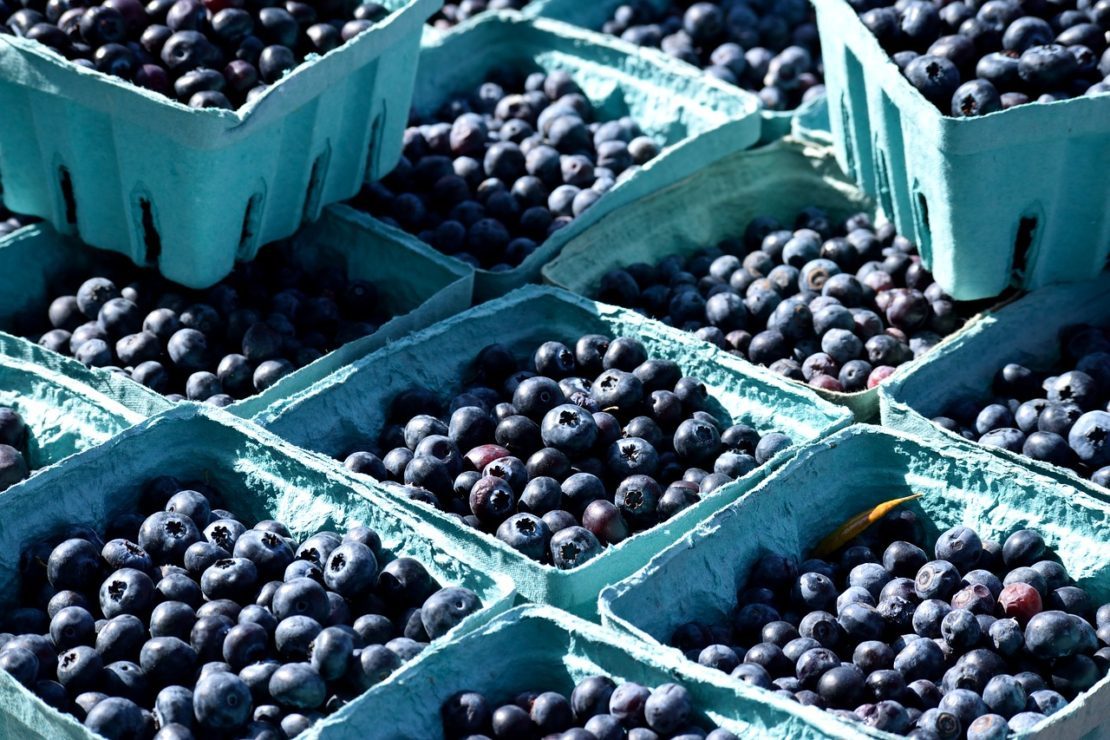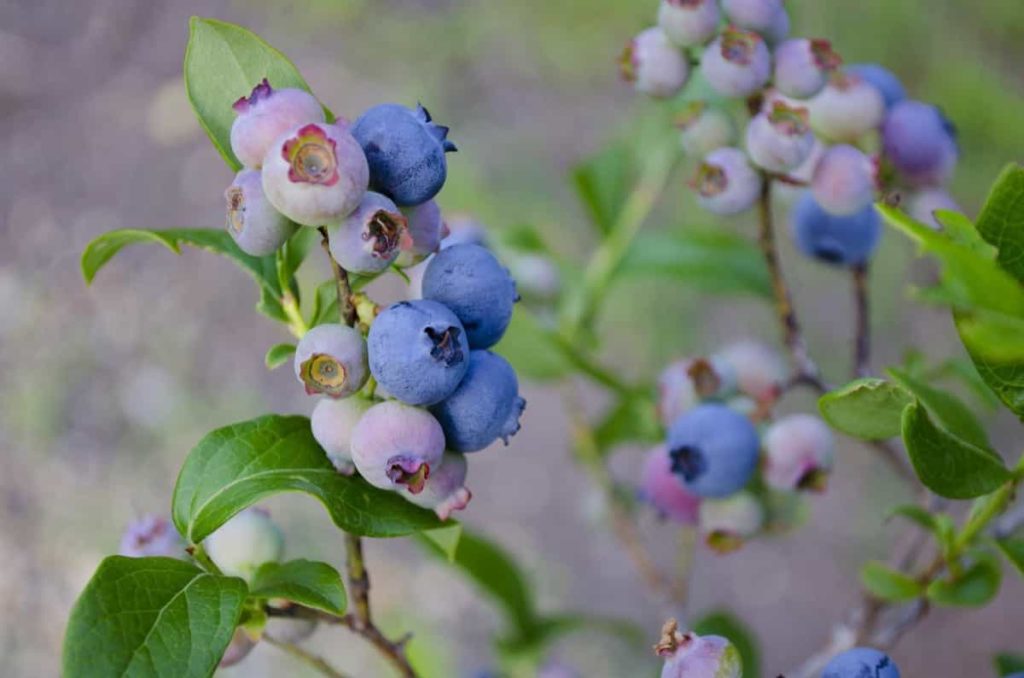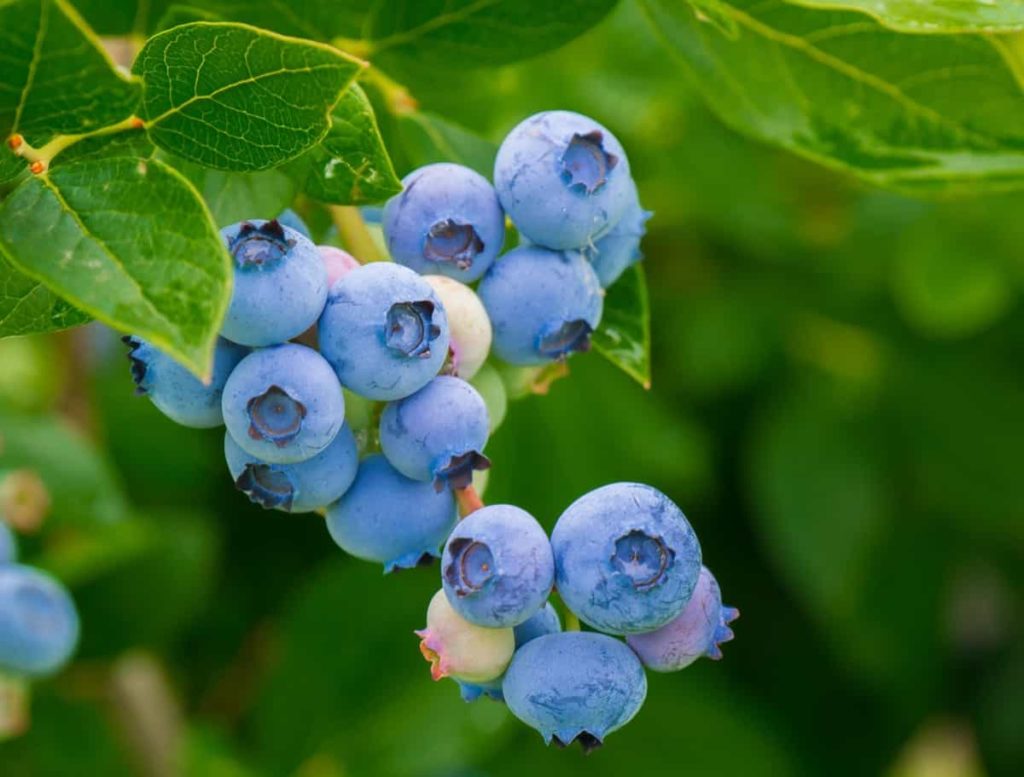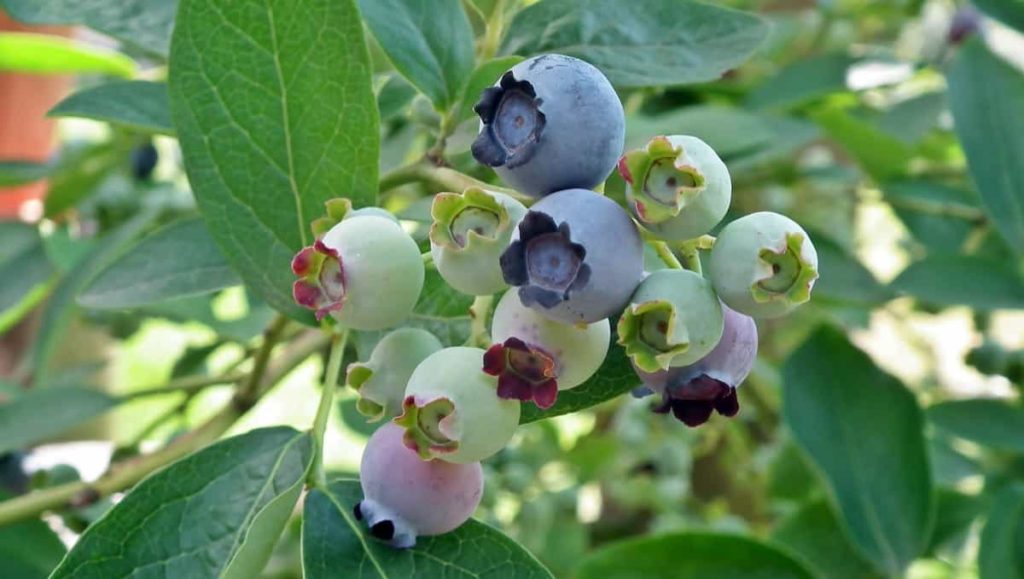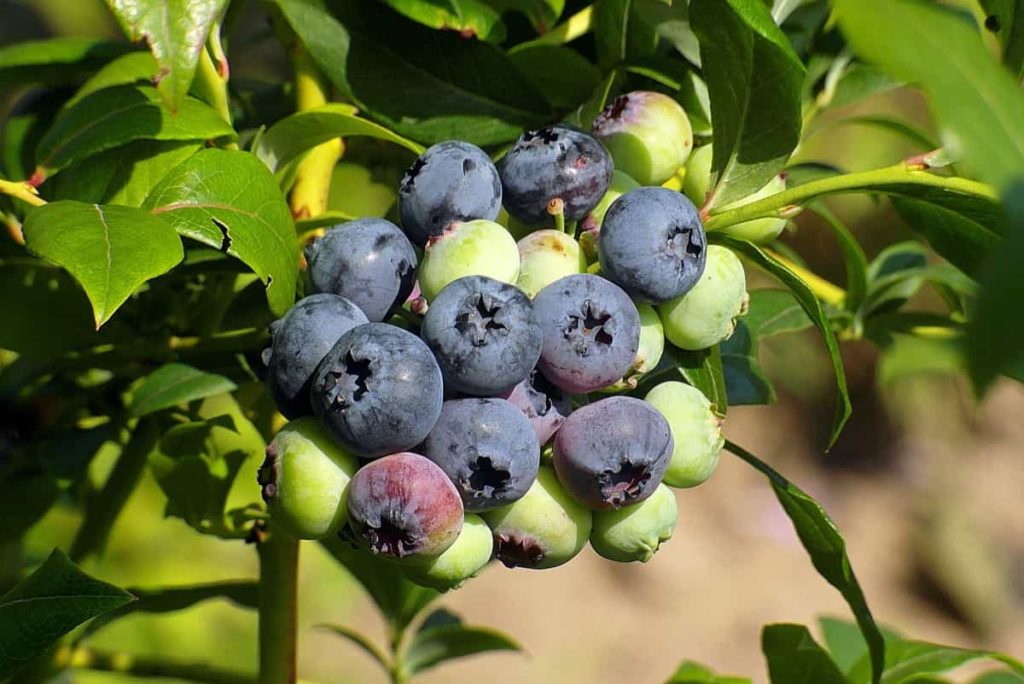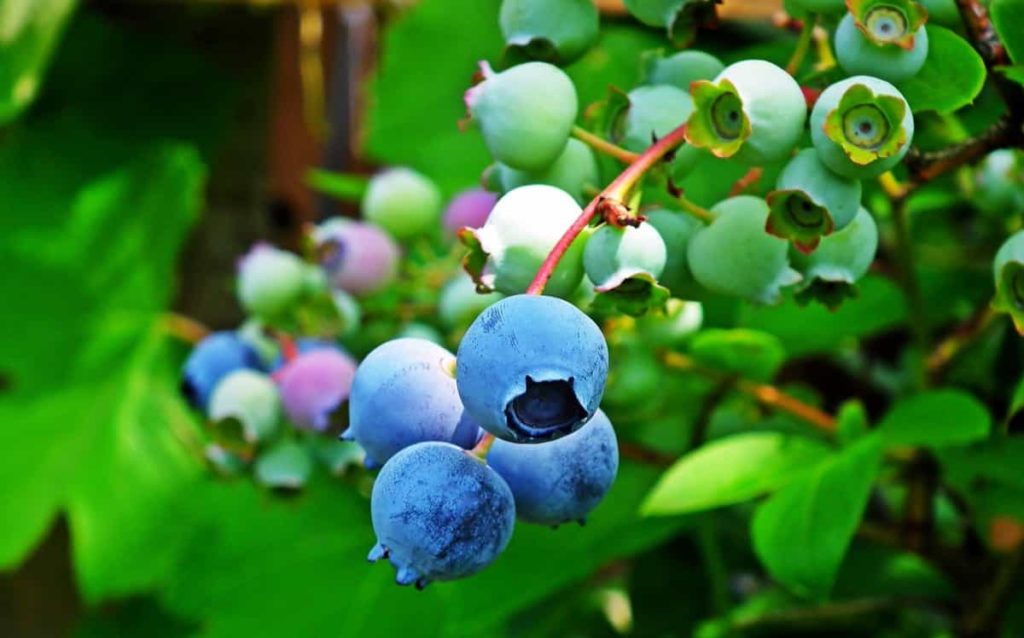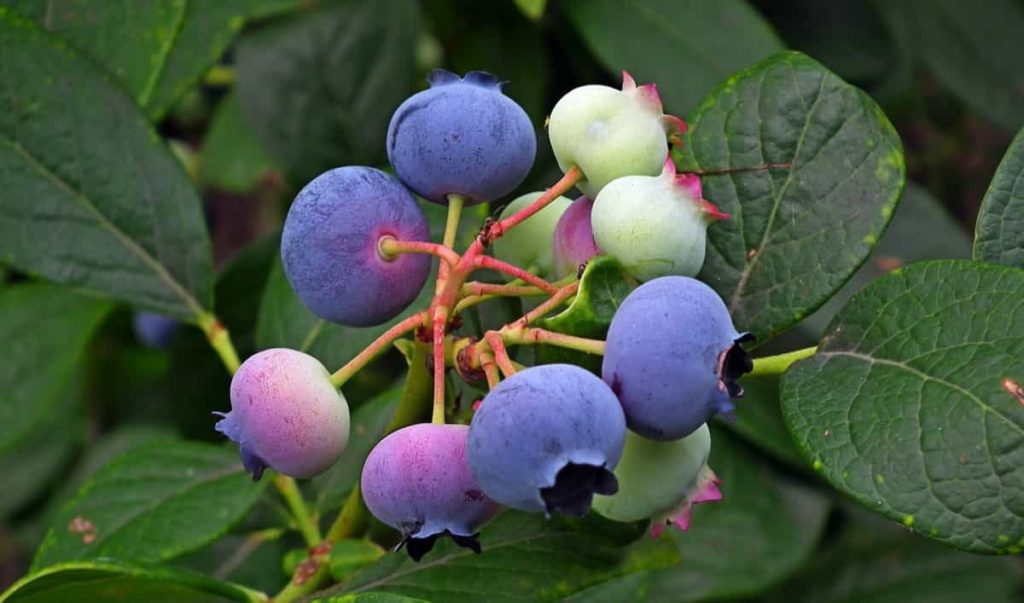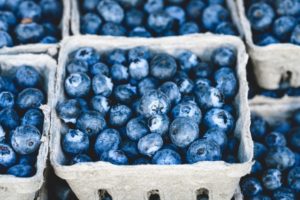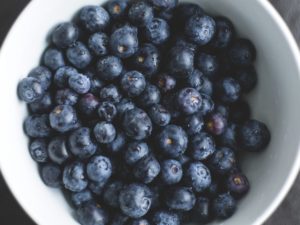Best Fertilizer for Blueberries: Homemade, Organic, Compost, Natural, Liquid, How and When to Apply
Fertilizing is one of your Blueberry plant’s requirements to stay healthy and produce delicious fruits. Most fruit crops require annual nitrogen applications to help root and shoot growth, maintain healthy green leaves and promote high-quality fruits. The slow-release nitrogen source is the most desirable to prevent excessive damage through the leaching of irrigation water. Other nutrients, including phosphorus and potassium, are readily available in well-maintained soil. Let’s check out the best fertilizer for Blueberries below.
Conducting soil testing is the best way to determine whether your soil needs nutrients or not. Symptoms of nitrogen deficiency are usually present as chlorosis of leaves with a reddish complexion and poor growth. Excessive nitrogen applications can increase plant growth; however, they can reduce yield and quality. Plants absorb fertilizer nitrogen more effectively by late-blooming through fruit maturity. Phosphorus is mobile in the plant but very immobile in the soil.
If plants are stunted and have dark green leaves, it can signify phosphorus deficiency. The leaves may also have red color due to the accumulation of anthocyanin. Over-application of phosphorus will increase the ratio of root to shoots. Phosphorus deficiency in the early season can be due to the cool soil temperature, which leads to the slow growth of roots. If the potassium level is inadequate, the fruit can be soft. Old leaves with necrotic lesions are often found on deficient plants.
Potassium chloride is a general material used in many compound fertilizers. It would be best to avoid these types of fertilizers when fertilizing Blueberries. If soil tests after planting show a rise in pH, add small amounts of iron and zinc modifications to keep the plant healthy. Too much calcium in soil prevents soil from decreasing permanently in pH, which means you should check your pH every year and include amendments as needed. Fertilizer, in particular, carries nitrogen in many different forms.
Blueberries need fertilizers with an ammonium form of nitrogen such as urea, sulfur-coated urea, ammonium sulfate, or cottonseed meal. Blueberry plants also suffer from iron or magnesium deficiency. If your Blueberry bush leaves change colors from red to yellow, especially near the edges of the leaves, it is most likely magnesium lacking. If the Blueberry leaves turn yellow with green veins, it’s probably iron deficiency. Treat any of these problems with proper nutritional Blueberry fertilizers.
Best fertilizer for Blueberries
Homemade fertilizers for Blueberry
- Coffee grounds – To fertilize the soil, sprinkle 4 or 5 cups of the coffee ground around under each Blueberry bush, then rake the coffee grounds into the top layer of the soil. You can apply every two to four weeks or as needed.
- Eggshells – Eggshells can increase the soil acidity of the garden and improve the soil for Blueberries.
- Epsom Salt – If your Blueberry needs magnesium, Epsom salt provides temporary relief. In deficient soil, broadcast 1/4 cup of Epsom salt 10 inches in diameter around the plant and broadcast the water well. If the high pH is the real culprit, the excess magnesium in the soil will not help, and the sulfur of Epsom salt does not affect pH.
Compost manure for Blueberry
- Manure – Cow manure is undoubtedly the most beneficial for acid-loving plants like Blueberries.
- Composted dairy manure or composted chicken manure will help increase the soil’s nutritional content, feeding microorganisms that benefit Blueberry roots. Mix the fertilizer with soil in proportion to 3 parts of soil from 1 portion of manure. Once Blueberries are established, top-dress the soil every year with composted manure for extra nutrition.
- Compost – Compost made from rotten yard debris and vegetable waste feeds microorganisms in the earth, increases drainage, and encourages insects for the Blueberry.
Natural fertilizers for Blueberry
- Materials such as decaying plants, animal bones, and leaves enrich the soil with organic matter, which Blueberries need to be healthy. At home, leaves falling from trees during the fall can be crushed and worked in the topsoil around Blueberry bushes.
- For organic matter, Pine sawdust or wood chips can also be worked in the soil. A 3-inch-thick coat of leaves or sawdust promotes a healthy Blueberry bush. You can apply organic matter annually in the spring after the first fertilizer application, which can happen.
Organic fertilizers for Blueberry
- For organic fertilizers for Blueberries, you can use soybean meal, blood meal, or fish meal to provide nitrogen.
- Bone meal and powdered seaweed used to fertilize Blueberries can provide potassium and phosphorus.
- Scatter soybean meal or fish meal 1/4 cup in a circle around the base of each Blueberry bush in a year or two when the bush is still small. These amendments are rich in nitrogen. As the bush gets bigger, or if your soil test changes the abnormal lack of nitrogen, apply up to 2 cups of fish or soybean meal.
Liquid fertilizers for Blueberry
- Vinegar – Mix 1 gallon of water with 1 cup of white vinegar, and spray the soil around the Blueberry bushes until the ground is wet but not saturated. Re-examine the soil 12 to 24 hours after application of vinegar. Repeat this process until you get a proper pH.
- Kelp – Mix a gallon of liquid kelp and 50 gallons of water. You should apply bud to the fruit fill. Apply it on the leaves every three weeks.
- Fish emulsion – Feed Blueberry bushes with liquid fish emulsion every week. Dilute the fish emulsion at the concentration suggested on the package, and use the amount of liquid prescribed on the package for use with small or new fruit shrubs.
Commercial fertilizers for Blueberry
NPK ratio
Blueberries are also heavy feeders. As a result, 10-10-10 and 13-13-13 ratios are recommended for Blueberry NPK fertilizers. For non-organic fertilizer, use 1 and 1/2 tablespoons of 10-10-10 fertilizer for each row dose. If one or two applications are made, apply 1/2 cup of 10-10-10 fertilizer per plant. Fertilize each plant around the base with two tablespoons 13-13-13 or equivalent during the first season.
Apply one tablespoon of ammonium sulfate (21-0-0) or other high nitrogen, acidic fertilizer about six weeks later. Blueberries usually thrive when they get a fertilizer high in nitrogen as it strengthens the plant’s root system. However, fertilizers containing nitrates such as calcium nitrate or chloride can negatively affect or even kill a Blueberry bush. Since Blueberries are acidic-loving plants, you can fertilize with ammonium sulfate fertilizer to help keep your pH low. It would be best to fertilize Blueberry plants three times during the growing season.
Blueberry fertilizer schedule
Blueberries need a little more product than other berries. However, like any other berry, Blueberries enjoy the usual application of nutrients. There are some important times that you should fertilize your Blueberries. The most crucial time to apply products to them is when new growth starts in spring. It gives plants a strong foundation to continue growing healthy roots during this season. Most often, second fertilization should be applied after six weeks. Different brands vary from two weeks to seven weeks, depending on potency and release.
The time for the last fertilization is immediately after your Blueberry is harvested. It helps in filling the soil after a long growing season. Usually, the stem and roots get tired of all this hard work, so they need a little pick me up. Applying fertilizer then helps them prepare for the next growing season. It also helps strengthen them for long winters in between. Fertilizer should be in early spring (before the leaves appear) and then from late spring to early summer. The application rate and time depend on which product you choose.
Read and follow all instructions for any fertilizer you use. Blueberry plants grow slowly; it takes years to reach maturity to start bearing fruit permanently. Generally, you should give young Blueberry plants more fertilizer initial two to three years. To get the fertilizer to the roots, start by raking a few inches in the soil when your Blueberries are ready to plant. Make sure it is deep enough for the roots of the Blueberry plant to fit well. Once you’ve made a hole, mix with some ground soil in the compost.
Once it is well added, plant your Blueberry base and water it down. It would be best to not fertilize newly planted Blueberries until four to six weeks after planting. You don’t need extra fertilizer for established Blueberry plants if Blueberry plants produce leaves, flowers, and fruits well. The way fertilization is a little different for a mature Blueberry plant. If you’re not going to dig the plant completely, it’s better to apply the product around the bush’s base. Start by raking a circle around the bottom of the Blueberry bush, about two inches deep in the soil.
Once you loosen the soil above, add a single level of fertilizer. Make sure that fertilizer does not touch the stem or leaves of the Blueberry plant. Direct contact with fertilizer can burn your plants. Once you have added a good supply of fertilizer, make sure to water it. It is essential to give an entire water session at this time, as it allows fertilizer to go deep erased into the soil. Then, your goal is to get fertilizer to the roots, and this method meets it. You should apply fertilizer between mulch and soil. Remove the mulch and sprinkle the fertilizer in an even circle of 18 inches from the base of the plant.
How to fertilize Blueberries in a pot
Put the acidic potting mix in a container with drain holes. Fill the container about 4 inches below the top. The acidic potting mix will control the level of pH in your container. Place a hand shovel in the center of the container and pull the soil upwards all over to make a hole to apply about three-quarters of the container’s depth. Sprinkle 10-10-10 fertilizer grains under the hole. Follow instructions on the fertilizer label for the amount of use of your specific products for a plant or planting containers.
Remove the Blueberry bush from the original pot and place it in the hole over the granular fertilizer. Push loose soil from the planting hole around the stem of the Blueberry bush and press it downwards to compact the soil. Fill the container from the mulch to the top. Water the plant well sequentially at low order until the water drains out from under the container. Fertilize Blueberry twice in the first season after planting time at intervals of two months. Pull the mulch away from the trunk to reveal the soil. Sprinkle 10-10-10 fertilizer grains on the ground in the amount recommended on the package label. Replace the mulch over the fertilizer and water the bush well.
Frequently asked questions about fertilizers for Blueberry (FAQ)
Why is my Blueberry bush not growing?
Blueberry plants are not growing well because they are either in very alkaline soil, they have been watered with hard tap water, overfertilized, underwater, or not pruned.
How long does a Blueberry bush take to produce fruit?
A Blueberry bush takes about two years to produce fruit and nearly four years before it will start harvesting more heavily and reliably.
Is potash good for Blueberries?
The muriate of potash is not recommended as extra chlorides are toxic to Blueberries.
How do you increase Blueberry production?
Always plant Blueberries in a sunny spot. Blueberries require full sun (6 hours or more direct sunlight per day) to grow and produce well. Plants will grow more slowly, and if planted in too much shade, they will produce less fruit.
Why doesn’t my Blueberry bush bear fruit?
You may have insufficient pollination if you don’t have flowers on your Blueberries.
Why are leaves purple on my Blueberry bush?
A lack of phosphorus causes the purple color in Blueberry leaves but is rarely observed in the field.
Read more:
